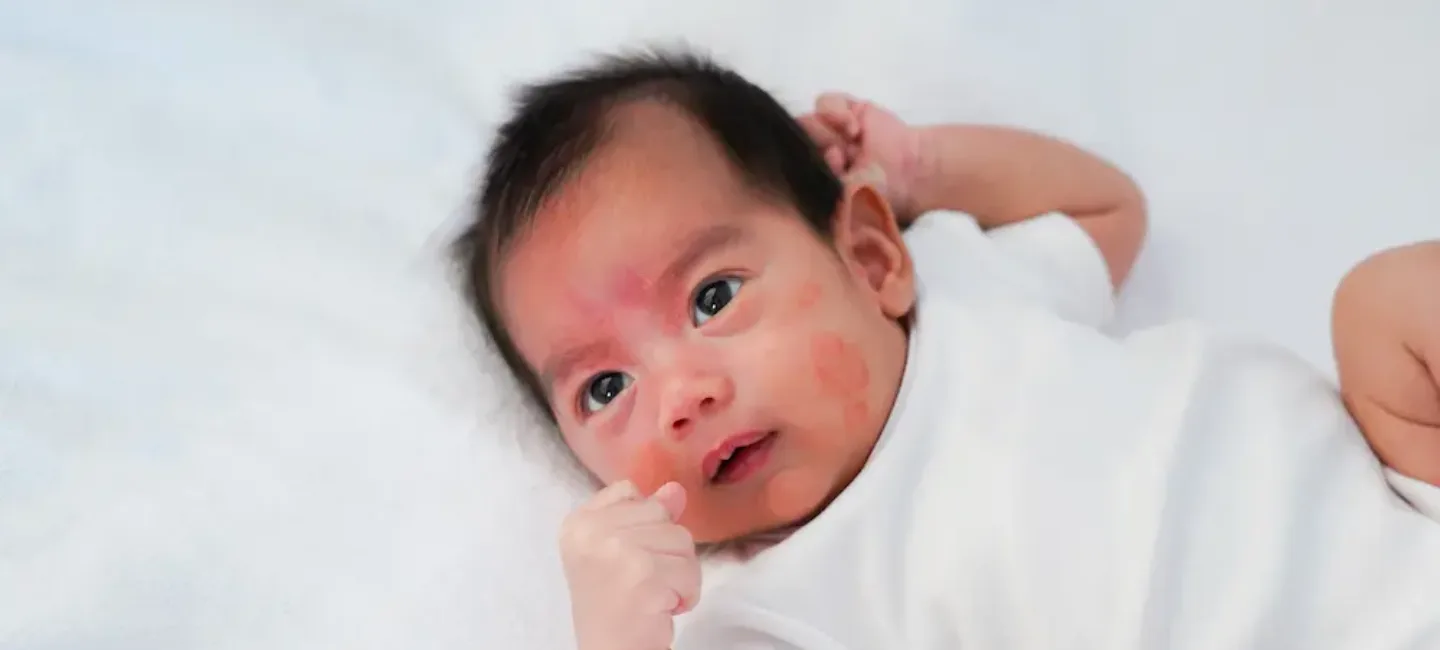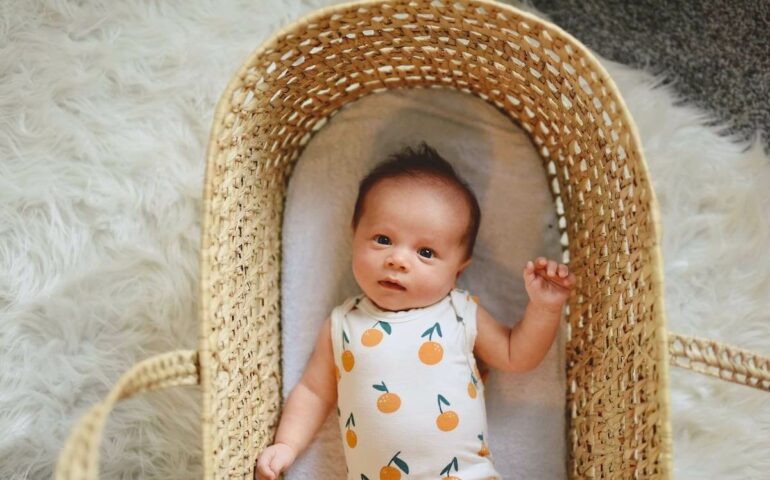
Babies have delicate skin that is often put to the test. Rashes and various skin reactions can have multiple causes. One of them is heat rash. How can you recognize these skin issues and, more importantly, how can you effectively relieve them?
Heat rash in babies: let’s take a closer look.
Understanding heat rash
Heat rash is a common condition in infants. Their skin is still very fragile.
What is heat rash?
Heat rash, also known as prickly heat or miliaria, appears as small red bumps that mainly occur on the forehead, around the neck, and in skin folds. These rashes appear as small white or pink blisters and can be accompanied by itching.
The rash is caused by blocked sweat glands: sweat cannot evaporate properly. This occurs mostly in hot and humid conditions.
Why are babies affected?
Babies are particularly vulnerable to heat rash for several reasons. First, their sensitive skin is more prone to skin problems such as rashes and irritation. Additionally, their sweat glands are not yet fully developed, which increases the risk of blockage in hot or humid conditions. Finally, their temperature regulation is still immature, making it harder for them to adapt to temperature changes.
Wearing clothes that are too warm or too tight can lead to inflammation caused by heat buildup. Skin folds, such as around the neck and buttocks, are areas where sweat accumulates easily, promoting the appearance of these rashes.
Symptoms and diagnosis
Heat rash in babies appears with distinctive signs, which help differentiate it from other skin issues.
Heat rash symptoms
Here are the typical symptoms of heat rash:
- Small red bumps: as mentioned earlier, these bumps often appear on the face, scalp, and in skin folds like the neck, armpits, and buttocks. They can also show up on the torso and back.
- Redness and rashes: the skin around the bumps may be red and slightly inflamed.
- Itching: though not always present, itching can prompt your baby to scratch, increasing the risk of irritation.
- No fever: unlike other rashes such as chickenpox or roseola, heat rash is usually not accompanied by fever.
Diagnosis
There are many types of skin infections. To distinguish them, healthcare professionals compare the symptoms.
- Atopic eczema: unlike heat rash, eczema appears as red patches and very dry, itchy skin. It usually comes in flare-ups and requires moisturizing creams.
- Hives: characterized by welts similar to nettle stings, hives can change location and cause intense itching. It’s often linked to allergies or infections.
- Baby acne: presents as small white or red pimples on the face and is generally harmless, requiring no specific treatment.
If in doubt, do not hesitate to consult a pediatrician or dermatologist to rule out more serious conditions such as chickenpox or measles.
Want to learn more? Feel free to download the May app, where you’ll find plenty of resources to support and guide you throughout your journey as a new parent.
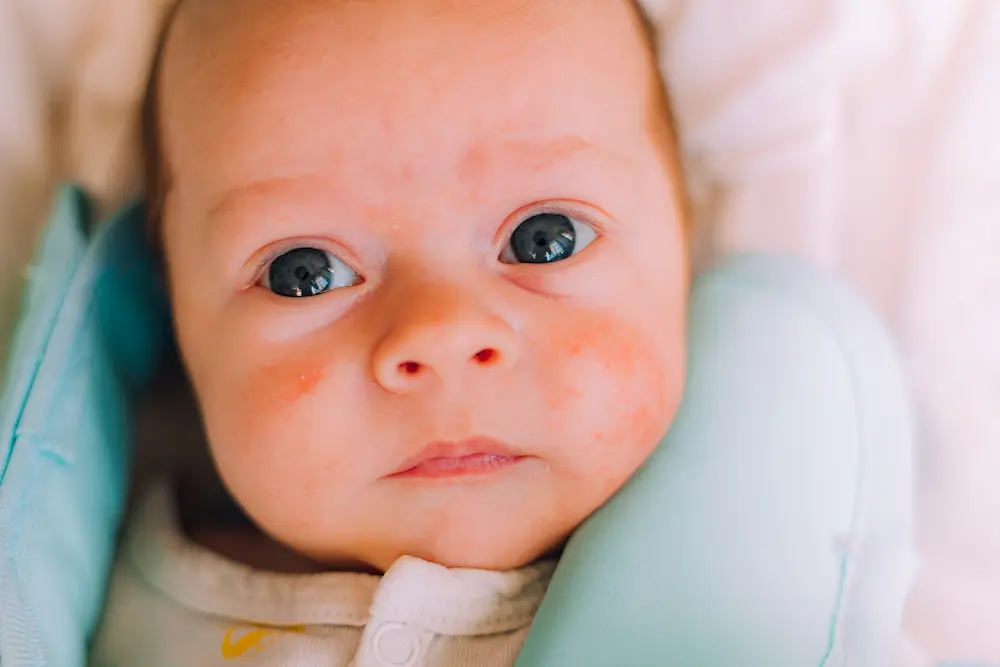
Preventing heat rash
There are simple measures to prevent heat rash. Here are some practical tips.
Clothing choices
Choosing the right clothing plays an important role in preventing heat rash. To avoid inflammation and irritation, opt for suitable clothing:
- Natural fabrics: prefer cotton clothing, which allows the skin to breathe and reduces the risk of rashes and skin issues. Avoid synthetic materials that can trap heat and moisture.
- Loose-fitting clothes: go for light and loose clothing to avoid friction in skin folds, especially around the neck and buttocks.
- Light colors: light colors reflect sunlight and help maintain a cooler body temperature.
Temperature control
Maintaining a comfortable room temperature helps prevent heat rash in babies:
- Ensure your baby’s room is well ventilated. You can use an air conditioner or a fan, but do not direct the airflow straight at your baby.
- If your baby is breastfed, offer the breast more often to keep them hydrated. For bottle-fed babies, you can offer small amounts of water between meals.
- Avoid thick creams and lotions that can clog sweat glands and increase the risk of heat rash. Choose lightweight, non-comedogenic products instead.
- It’s best to avoid going out between 11 a.m. and 4 p.m., the hottest hours of the day, and to seek shade to protect your baby from the sun. Tip: use a wide-brimmed hat for extra protection.

Treatments and care
There is no specific treatment for heat rash. However, you can relieve itching and redness while waiting for it to subside.
Natural remedies
To soothe heat rash naturally, there are several simple and effective methods:
- Light clothing: dress your baby in loose-fitting cotton clothes to allow the skin to breathe and reduce inflammation in folds.
- Warm baths: warm (not hot) water without harsh soaps can clean the skin gently. Dry the skin by patting, not rubbing.
- Hydration: apply a lightweight, fragrance-free lotion or cream to hydrate the skin after bathing. Avoid thick products that might clog pores. Ask your pharmacist or pediatrician for advice.
- Thermal water: applying thermal water to the affected areas can help calm irritation. You can use a soaked cotton pad and gently pat dry afterward.
When to see a doctor?
Although heat rash is harmless, some situations require medical attention:
- If the rash starts oozing, forms scabs, or develops a foul odor, it may indicate an infection such as impetigo. See a doctor promptly.
- If your baby develops a fever or if the rash spreads quickly, it could signal an illness like chickenpox.
- If the heat rash does not improve despite home care, consult a dermatologist to rule out other skin issues like eczema.
- If your baby shows signs of allergy such as hives or red, itchy patches, seek medical advice to determine the cause and proper treatment.
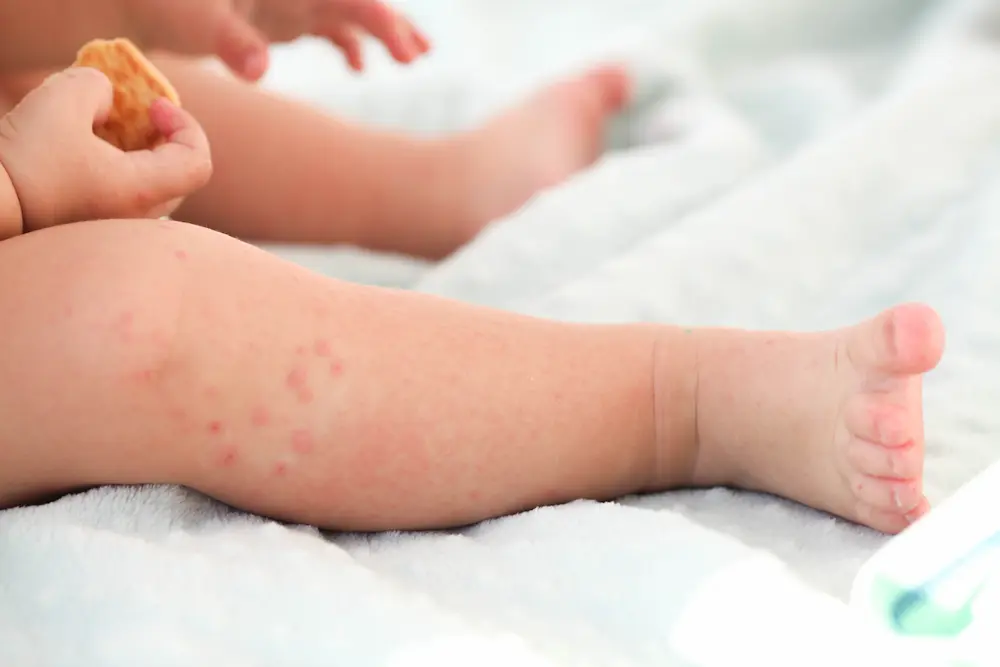
Frequently asked questions
Heat rash in babies raises many questions from parents. Here are some of the most common ones.
Can heat rash cause infections?
Heat rash itself does not cause infections, but if your baby scratches intensely, it may break the skin, increasing the risk of bacterial infection such as impetigo. We recommend trimming your baby’s nails regularly.
How to tell the difference between heat rash and eczema?
Although both can appear as red patches, eczema often involves very dry, intensely itchy skin and may require specific creams like corticosteroids. Heat rash usually presents as small red bumps that appear in hot weather and go away with simple care.
Is heat rash caused by an allergy?
No, heat rash is not caused by an allergy. It results from blocked sweat glands due to heat and humidity. However, it is important to distinguish it from allergic rashes, which may require a different treatment.
What if heat rash persists?
If heat rash does not improve with home care, or if your baby shows additional symptoms such as fever or widespread red patches, consult a dermatologist to rule out other skin problems.
Heat rash is a common and benign skin condition in babies. A few preventive measures, such as appropriate clothing and keeping the environment cool, can reduce the risk while helping to soothe your baby’s sensitive skin.
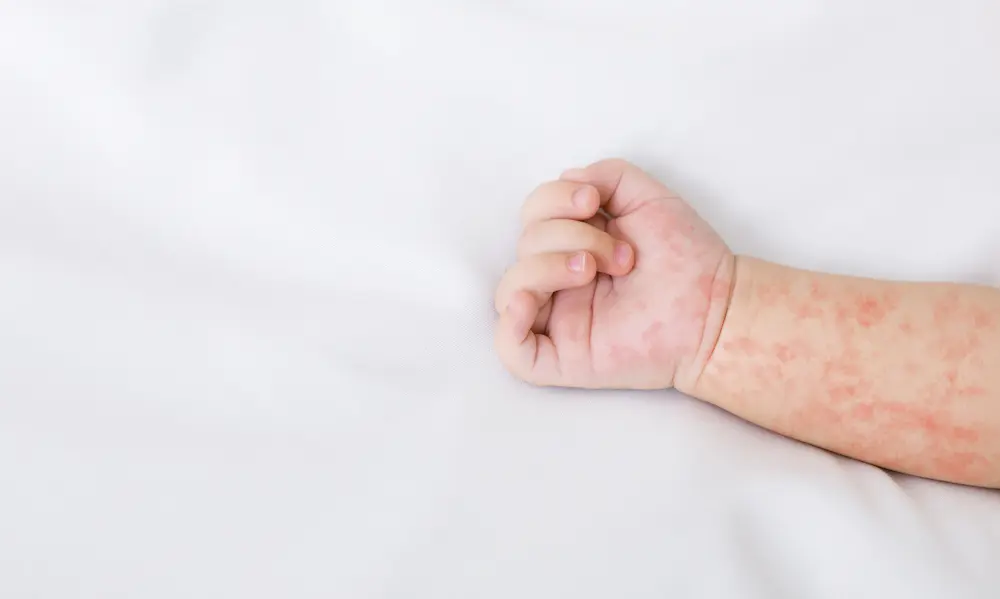
Photos: leungchopan | kwanruanp | Prostock-studio | smile23 | aliona2194
This text was translated from French by an artificial intelligence. The information, advice, and sources it contains comply with French standards and may therefore not apply to your situation. Make sure to complement this reading by visiting the May ES/UK app and consulting the healthcare professionals who are supporting you.
